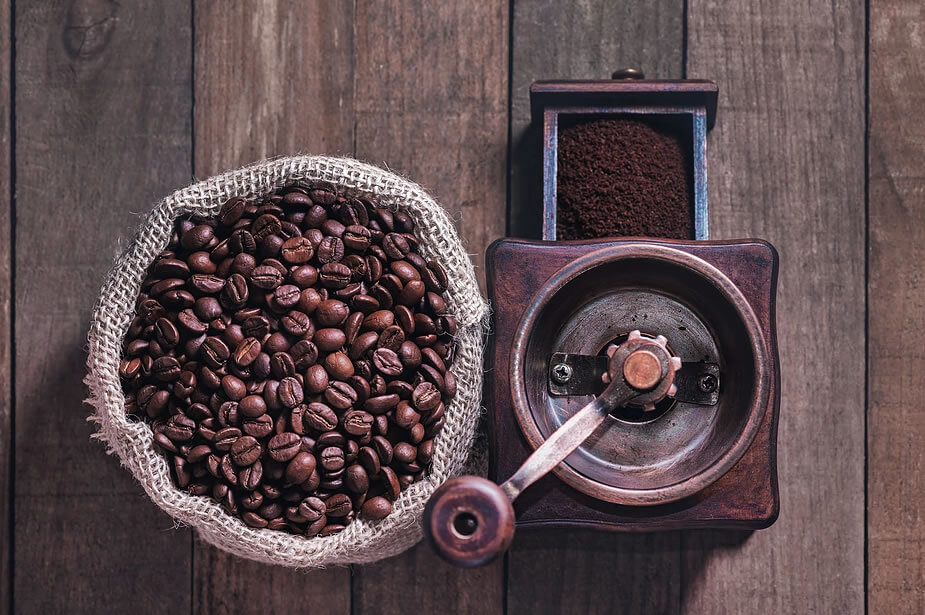Grinding coffee right before preparing the beverage prevents premature oxidation, which preserves its natural properties.
If you are interested in learning how to do it, we have prepared a guide for dummies that will surely help you in your adventure, young coffee apprentice.
First of all, not all ground coffee is the same
Just as there are various methods for grinding coffee, there are several types of ground. Although there is no exact scale to measure accurately, you can distinguish them with a simple experiment.
Take some ground coffee by pinching it with your index finger and thumb and rub it gently on your buds. You’ll be able to tell what kind of grind it is by its texture:
-
When the coffee does not stay in the fingers and continue clean once the test is done, the grind is coarse. Its particles are uneven and heavy.
-
It’s perfect for french press, toddy makers (the one you need to do cold brew coffee), and vacuum coffee maker.
-
Coffee with medium grind slightly stains the fingertips and sticks a little bit. It has a texture similar to sand, but not fine enough, great for drip makers. If the coffee sticks easily to the fingers, you have a fine grinding coffee. Its texture is similar to refined sugar: the chosen one for a perfect espresso!
-
An extra fine coffee grinds look like flour. The granulate is so light that it almost dissolves, used to prepare a Turkish coffee cup.
Coffee grinding methods
You can grind the coffee beans using a grinder or through other alternatives a little more artisan. We’ll explain both:
Coffee mills:
A blade mill is great if you need coarse to medium ground coffee. That’s why it’s common to see them next to drip makers, toddy maker, or french press.
Most of them have a top capsule in which the grains are placed, and a bottom capsule, where the blade is. These machines crush the grains until they are pulverized.
The secret is to activate the machine for a few seconds so as not to reheat the coffee nor pulverize it more than necessary. Tap the bottom so that the dust does not stick to the bean that falls on the blade. That way, the result will be neater.
Burr mills produce less friction than blade grinders, so they don’t overheat the grain. By doing this, the original aroma and taste are better preserved.
There are hundreds of models on the market, so each one works differently. There are electric mills that grind the grain until make it sand in a few seconds. But if you’re a vintage person, there are still manual mills out there that can do the same job if you turn the crank.
The result is the same: super-fine ground coffee for espresso machines, Turkish coffee or traditional Italian coffee machines.
Simple methods to grind coffee without a grinder
Use the blender (watch out for blades that aren’t designed to grind hard stuff). Put the grains in a zip-lock bag or between two napkins and use a hammer to crush the grains until they have the texture you want. If you have a vintage soul, you can go back to the last century grinding your coffee grains with a mortar and a pestle.

